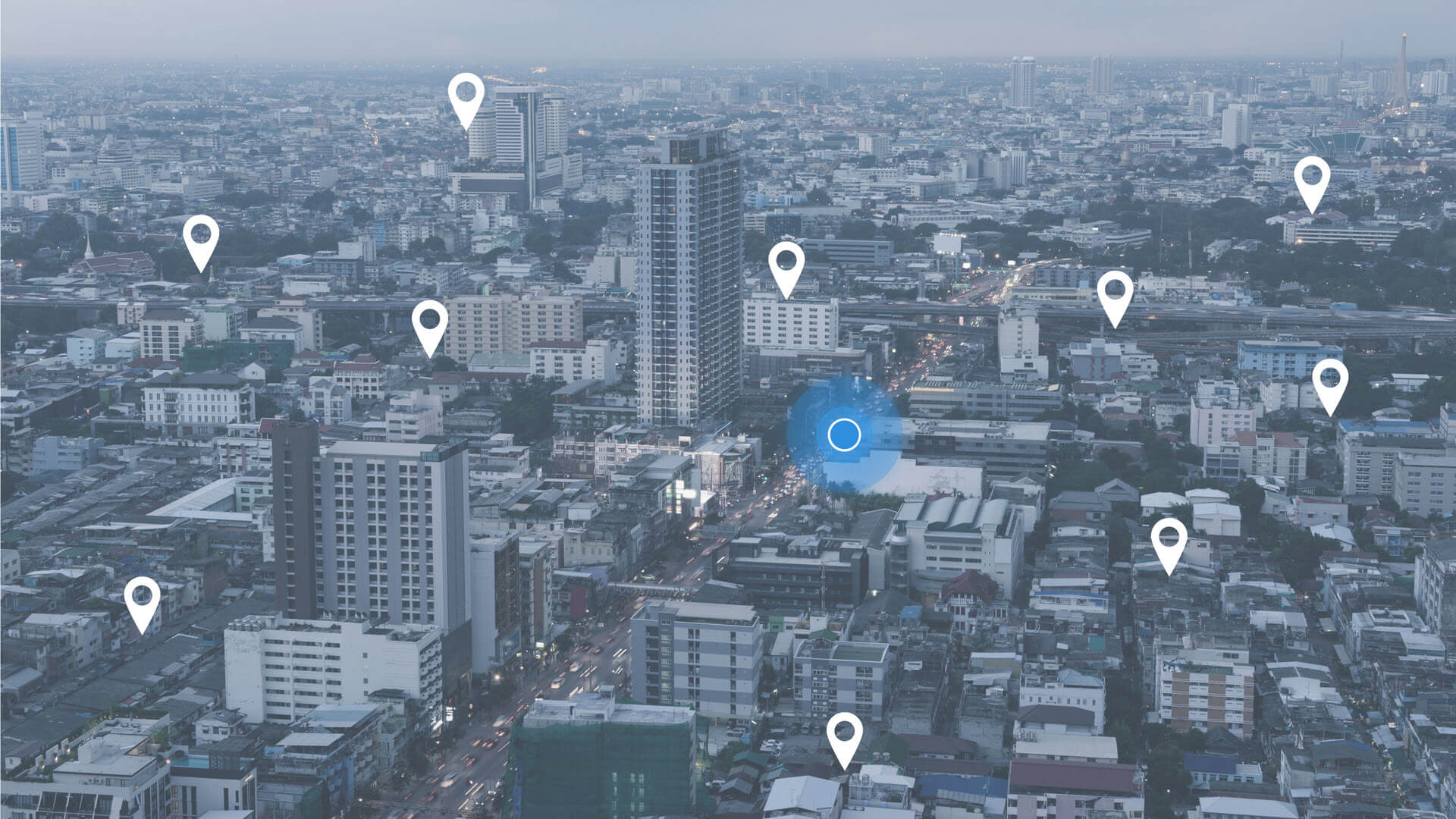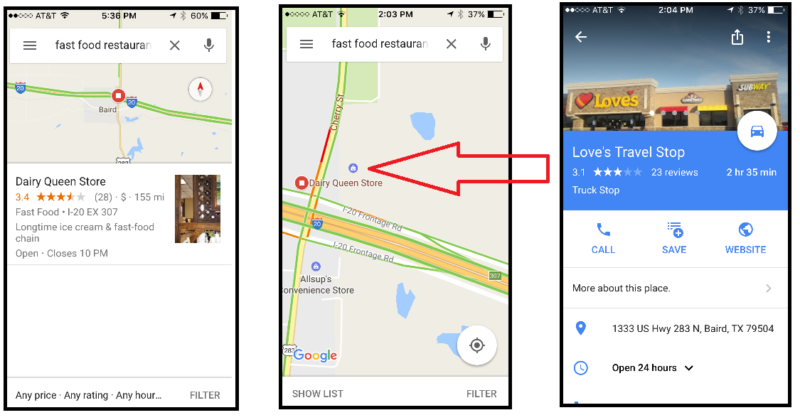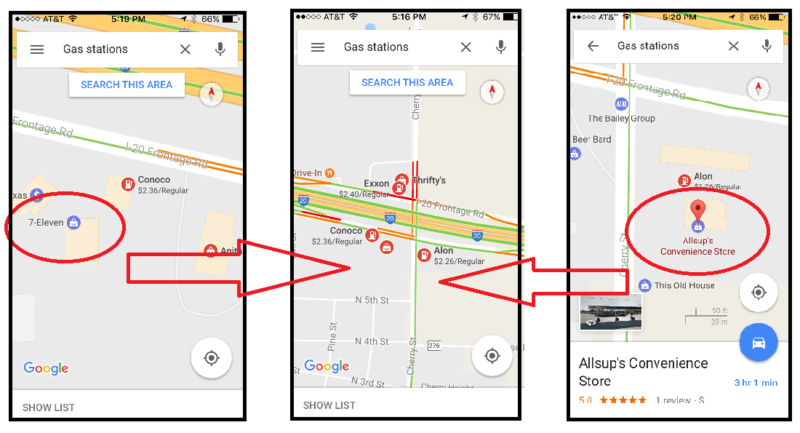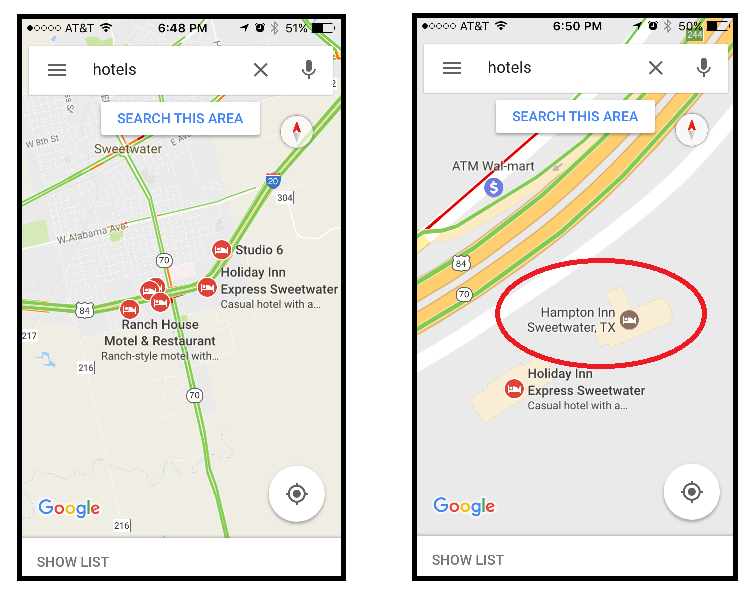4 ways brands are losing store traffic — and how to use location marketing strategies to reverse course
Many national franchise stores are failing to appear in Google Maps search results. Columnist Wesley Young's observations may help these brands improve their visibility.

Many brands continue to be challenged by location-based search despite its importance to customer engagement and store visits. Consider these numbers to understand why brands need to make location a priority:
- 85 percent to 95 percent of consumer engagement with brands happens through location-based assets.
- Use of location in advertising provided up to a 27 percent lift in specific campaigns run by Wendy’s.
Yet it is common for major brand stores to not show up in location-based searches. Alternately, some are outperformed in search results by other brands that are doing a better job managing their online location presence.
Some brands are much more visible in location-based search than others
Location and maps are practically synonymous. With Google controlling 95 percent of mobile search market share, Google Maps is critical to local search.
Consider the dominance of two brands in a search for “fast food restaurants” in Google Maps (see below). The search area was randomly selected; I picked a non-urban area northwest of Philadelphia.
Twelve of 20 search results were from Wendy’s and Arby’s, with Wendy’s making up eight and Arby’s making up four search results. These two brands not only took the most spots, they also took the top results. The remaining eight search results were divided among five other brands: McDonald’s, Burger King, Dairy Queen, Popeye’s and Taco Bell. In a repeat of the test, Wendy’s and Arby’s actually increased their superior metrics, occupying 14 of 20 search results.
The numbers suggest more than coincidence. They reveal intentional and strategic decisions by the two brands — especially considering that there are easily over 20 McDonald’s restaurants in the search area.

Wendy’s and Arby’s occupy 12 to 14 of 20 search results.
Location is especially important to spontaneous purchase decisions such as travel
Location-based search is critical to restaurants, counter service and fast food establishments, where purchase decisions are usually spontaneous. David Kaplan at Geomarketing reports that location plays a “gargantuan role” in customer decisions to eat at Wendy’s. Brandon Rhoten, Wendy’s VP/head of advertising, digital/social media, stated, “When it comes to food, you need to know what’s near you. We’re not a ‘considered purchase’ at all. We’re one of those brands that has to catch you as you’re making a decision.”
This is also true for other business categories, such as gas stations and hotels — especially those located along the roughly 47,000 miles of busy interstate highway in the US. As retail spending is down, travel spending is booming, and AAA reports that low gas prices are prompting 69 percent of vacationing families to take road trips. Hotel occupancy is at record levels since a 2009 low. Food and beverage sales have grown at double the rate of other retail spending, and for the first time, Americans spend more eating out than at grocery stores.
I experienced firsthand the difference that good location search marketing can have while driving on America’s highways. My family took a trip to Big Bend National Park for spring break, a nine-hour drive from Dallas. Needless to say, we looked for gas and meal stops along the way.
It was surprising to me the number of times my wife would be looking along the route on Google Maps for places to stop and was unable to locate many of the places that we would see driving by. For example, she’d see map results and say, “The next Subway is about 10 miles away, and there’s a Dairy Queen in six miles. I don’t see much before then.” Yet we’d pass two different Subway restaurants and many other fast food joints that advertised on highway signs.
That experience prompted me to take a closer look at why major brand stores were not showing up in Google Map search results. Below, I examine four ways I found brands being hurt by poor location practices and how they can improve customer traffic with better marketing strategies.
1. Link to location-specific pages on individual store Google Maps listings
In the above example, map results to the search query “fast food restaurants” found mostly Wendy’s and Arby’s stores. Both brands link to a location-specific page with address, maps and hours in the web page section of the Maps listing. Wendy’s uses locations.wendys.com and Arby’s uses locations.arbys.com.
On the other hand, McDonald’s and Dairy Queen link to the general websites McDonalds.com or DairyQueen.com, where there are some promotions for the brand as a whole. Each site offers the ability to find nearby store locations by typing in a ZIP code or address and has location-specific pages, but these are not directly linked to a store’s specific Google Map listing. Burger King does link to a specific page, even though the website address is listed simply as bk.com. Perhaps a clearer URL that signals it provides location information to Google would perform better.
On my trip, the worst-performing fast food restaurant was Subway. Even zoomed in on a small intersection in Google Maps, the store pin often appears as an orange circle instead of a red circle. For restaurants, only the red circles or dots appear in Google Maps’ list of search results. Subway links to a menu and online ordering page via order.subway.com. While this alone may not account for the vast difference in Google Maps visibility, it seems an easy one to fix.

Subway restaurant doesn’t appear in Google Map results for “fast food restaurant.”
2. Separate bundled retail outlets into individually located stores
As we were driving through Baird, Texas, there appeared to only be one dining option: Dairy Queen. At least, that’s how it seemed based on Google Maps. Yet about 300 feet away from the Dairy Queen was a Love’s Travel Stop that had a Subway and Chester’s Fried Chicken located inside the store.
Below is the profile picture of the Love’s Travel Stop that clearly shows signage for both fast food restaurants. However, they are virtually impossible to find searching on Google Maps. The Subway store doesn’t even appear in search results for the search term “Subway” in the area, let alone a search for fast food restaurants.

The Subway and Chester’s inside Love’s Travel Stop do not appear in search results.
In this case, separate Google listings should be created for all three stores: Loves, Subway and Chester’s. Google allows multiple storefronts to occupy an identical address. In creating unique Google listing pages, the most helpful differentiator appears to be a unique phone number for each listing.
Other ways to distinguish and promote each business would be to link to unique (location-based, see #1 above) web pages, and if possible, add suite numbers. Make sure that other citations (e.g., Yelp, TripAdvisor, YellowPages.com) likewise distinguish the separate stores with those unique phone numbers, addresses and website/pages.
3. Double down on descriptions of services to cover multiple business categories
The need for gas is a necessity that forces a stop on a road trip. But customers often refuel more than their cars, and gas stations depend on it. Gas has one of the lowest profit margins in retail, so the drinks and snacks that customers buy are often what supports the store.
That explains the common partnership between gas station and convenience store. It also offers the opportunity to get two bites at the apple as customers may search for either keyword: “gas stations” or “convenience stores.”
The problem is that gas stations commonly split the two business categories into their respective brands. So a search for gas stations would pull up a Shell, Alon or Exxon. A search for convenience stores pull up a 7-Eleven or Allsups. Yet a store may be more attractive if a customer who searches for gas stations can also see a nice convenience store like a 7-Eleven attached to it.
The screen shots below show that 7-Eleven and Allsups convenience stores in Clyde, Texas, are not showing up in searches for gas stations. The blue markers indicate they are not a search result and only show up as a surrounding business when the map is zoomed in to an area smaller than a football field.

Convenience stores 7-Eleven and Allsups do not appear in search results for gas stations.
Stripes (a convenience store/gas station brand in the Southwest) seems to do a nice job being found regardless of what search term is used. It will often have two or even three pin drops per store — one for the gas station, one for the convenience store and even one for an ATM located on site. Every listing, even the ATM listing, will include a description that indicates it carries gas, snacks, drinks and sundries, and thus all listings appear on the map in searches for “gas station.”
Increase the odds of being found, and make sure customers know all of your core products and services no matter which part of your business they locate, by providing a concise yet complete description of your business for each listing.
4. Location-based search ads appear to boost organic mobile map search results
It makes more financial sense for businesses such as hotels to pay for search ads than it does for smaller transaction-based businesses like fast food restaurants or gas stations. And it seems to make a difference in organic search results on the Google Map app, too.
A search for hotels around Sweetwater, Texas, pulled up a few major brand hotels, including a Holiday Inn Express, a La Quinta and a Best Western. All three purchased ads that show up on a desktop Google Maps search. A less visible Hampton Inn doesn’t show up on the map until it is zoomed in, and there is no indication it purchased any advertising.
A search on a mobile device using the Google Maps app for hotels in the area pulls up a limited list of seven hotels, including the three brands that advertised. Hampton Inn doesn’t appear on the list or on the map. It only appears next to the Holiday Inn when I’m zoomed in as far as I can on the map, and the brown marker for the Hampton Inn indicates it is not included in the search result for “hotels.” In other words, it is highly unlikely to be found in a search for hotels.

Hampton Inn does not appear in search results for “hotels.”
Hampton Inn’s lack of visibility is despite its having a higher Google reviews rating and a higher TripAdvisor rating, with more than double the number of reviews. Thus, if your business isn’t showing up on Google Map results, it may be worth trying some paid advertising to see if that will help.
Final thoughts
Even major national brands struggle with getting location marketing right all the time. The numbers show that strong location marketing can make a big difference in being found, driving traffic and boosting sales.
Take a look and see whether any of these tips might help improve visibility on Google Maps in crowded and competitive search results. If you’re an agency working with brands, also make sure to get pre-campaign benchmarks that can help demonstrate the work you do is making that difference.
Contributing authors are invited to create content for Search Engine Land and are chosen for their expertise and contribution to the search community. Our contributors work under the oversight of the editorial staff and contributions are checked for quality and relevance to our readers. The opinions they express are their own.
Related stories
New on Search Engine Land